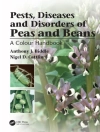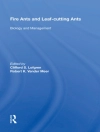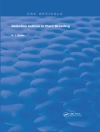This book summarizes a long-term research project addressing land and water use in the irrigated areas of the Aral Sea basin. In an interdisciplinary approach, natural and human sciences are combined to elucidate the challenges of economic transition that affect the use of land, water and biological resources, ecological sustainability, economic efficiency and the livelihoods of the local population. The research focuses on Khorezm, a region in Uzbekistan, located on the Amudarya river, in the heart of Central Asia. A series of chapters describes the biophysical environment and the aspects of society and institutions that shape land and water use. The book discusses options and tools to improve land and water management, and to reform the economic system management, based on agronomic, hydrological, economic ans social studies and modeling. The insights are not only important for Uzbekistan, but for all countries in transitions and irrigated dryland areas elsewhere.
Inhaltsverzeichnis
1. INTRODUCTION.- Preface.- 1.1 Cotton, water, salt and Soums – research and capacity building for decision-making in Khorezm, Uzbekistan.- 2. THE BACKGROUND (PHYSICAL SETTING).- 2.1 Agro-meteorological trends of recent climate development in Khorezm.- 2.2 Soils and soil ecology in Khorezm.- 2.3 Spatial distribution of cotton yield and its relationship to environmental, irrigation infrastructure and water management factors on a regional scale in Khorezm, Uzbekistan.- 2.4 Water management in Khorezm: current situation and options for improvement (hydrological perspective).- 3. THE SYSTEM SETTING (SOCIETY AND INSTITUTION).- 3.1 Farm reform in Uzbekistan.- 3.2 Mapping and analyzing service provision for supporting agricultural production in Khorezm, Uzbekistan.- 3.3 Politics of Agricultural Water Management in Khorezm, Uzbekistan.- 3.4 Water and sanitation-related health aspects in Khorezm, Uzbekistan.- 3.5 Price and income elasticity of residential electricity consumption in Khorezm.- 4. LAND MANAGEMENT IMPROVEMENT OPTIONS.- 4.1 Optimal irrigation and N-fertilizer management for sustainable winter wheat production in Khorezm, Uzbekistan.- 4.2 Groundwater contribution to N fertilization in irrigated cotton and winter wheat in the Khorezm region, Uzbekistan.- 4.3 Introducing conservation agriculture on irrigated meadow alluvial soils (Arenosols) in Khorezm, Uzbekistan.- 4.4 Crop diversification in support of sustainable agriculture in Khorezm.- 4.5 Conversion of degraded cropland to tree plantations for ecosystem and livelihood benefits.- 4.6 Abundance of natural riparian forests and tree plantations in the Amudarya delta of Uzbekistan and their impact on emissions of soil-borne greenhouse gases.- 5. LAND AND WATER MANAGEMENT IMPROVEMENT TOOLS.- 5.1 Economic-ecological optimization model of land and resource use at farm-aggregated level.- 5.2 Water patterns in the landscape of Khorezm, Uzbekistan. A GIS approach tosocial-physical research.- 5.3 Modeling irrigation scheduling under shallow groundwater conditions as a tool for an integrated management of surface and groundwater resources.- 5.4 Estimation of spatial and temporal variability of crop water productivity with incomplete data.- 6. ECONOMIC SYSTEM MANAGEMENT REFORM OPTIONS.- 6.1 A computable general equilibrium analysis of agricultural development reforms: national and regional perspective.- 6.2 State order and policy strategies in the cotton and wheat value chains.- 6.3 Prospects of Agricultural Water Service Fees in the Irrigated Drylands, Downstream of Amudarya.-.












